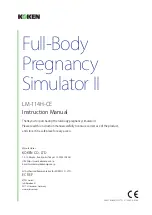
How to use Electric Paint with LEDs
Electric Paint is a great and fun way to connect batteries and LEDs together on paper. But there are some
things that you need to know when using Electric Paint in circuits. In this tutorial, we’re going to give you an
overview on how to use Electric Paint with LEDs. We aren’t going to dive too deep into the science of electric
circuits and LEDs, but if you would like to learn more about that, we’d recommend this excellent article:
https://learn.sparkfun.com/tutorials/light-emitting-diodes-leds
Some things to keep in mind:
• Make sure you check the voltage rating of your LEDs and battery before you begin. In this example, we are
using a 5V battery to power the LEDs. Using too much power might damage the LEDs.
• Circuit not working? Make sure the Electric Paint is completely dry and that the LED and battery polarity
are the right way around.
• CAUTION! Do not connect the wires of the battery together as this will cause a short circuit. This could
damage your batteries or start a fire!
Step 1
LED Fundamentals
In order to light up an LED, it needs to be connected to
a power source, for example, a battery or the digital pin
from the Touch Board. When you connect the LED to a
power source with a wire, you need to connect a resistor
in series with the LED. This to limit the current that runs
through the LED.
When you connect the LED to the battery with Electric
Paint, you don’t need to add a resistor, because the
paint itself is quite resistive. The resistance of the paint
depends on how thick, wide and long the paint is applied.
Generally, the longer the line of Electric Paint, the higher
the resistance.
















